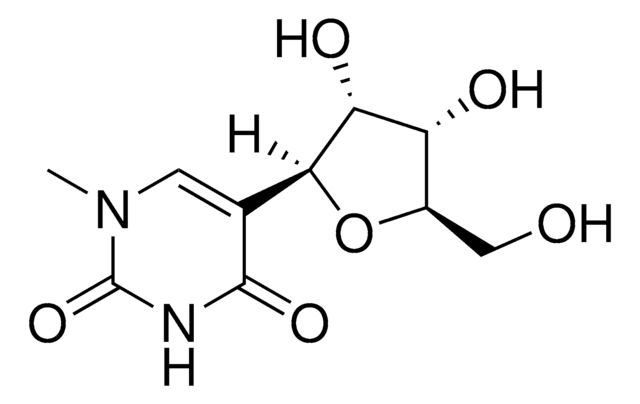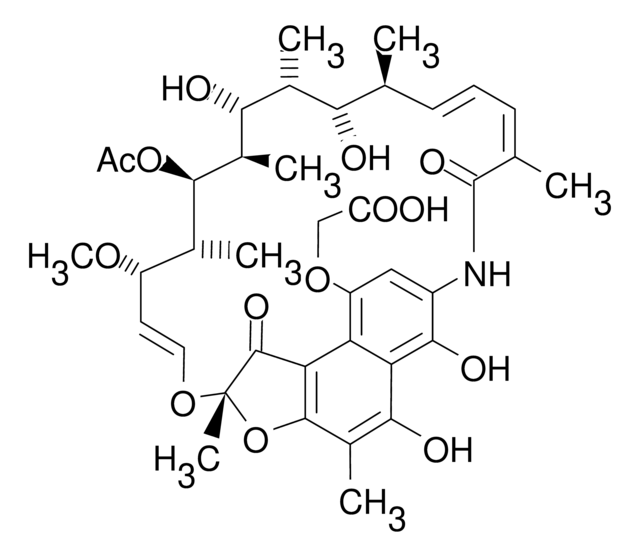SMB00912
Pseudouridine
≥98% (HPLC)
Sinónimos:
Pseudouridine, β-Pseudouridine, ψ-Uridine, 5-(β-D-Ribofuranosyl)uracil
About This Item
Productos recomendados
origen biológico
synthetic (chemical)
Nivel de calidad
Ensayo
≥98% (HPLC)
Formulario
powder
mol peso
244.2
color
white to off-white
mp
222 °C ((432 °F ))
solubilidad
water: soluble
temp. de almacenamiento
2-8°C
cadena SMILES
[nH]1[c]([nH]cc([c]1=O)[C@@H]2O[C@@H]([C@H]([C@H]2O)O)CO)=O
InChI
1S/C9H12N2O6/c12-2-4-5(13)6(14)7(17-4)3-1-10-9(16)11-8(3)15/h1,4-7,12-14H,2H2,(H2,10,11,15,16)/t4-,5-,6-,7+/m1/s1
Clave InChI
PTJWIQPHWPFNBW-GBNDHIKLSA-N
Descripción general
Aplicación
Características y beneficios
- High-purity compound suitable for a wide variety of research applications
Otras notas
Código de clase de almacenamiento
13 - Non Combustible Solids
Clase de riesgo para el agua (WGK)
WGK 3
Punto de inflamabilidad (°F)
Not applicable
Punto de inflamabilidad (°C)
Not applicable
Elija entre una de las versiones más recientes:
Certificados de análisis (COA)
¿No ve la versión correcta?
Si necesita una versión concreta, puede buscar un certificado específico por el número de lote.
¿Ya tiene este producto?
Encuentre la documentación para los productos que ha comprado recientemente en la Biblioteca de documentos.
Nuestro equipo de científicos tiene experiencia en todas las áreas de investigación: Ciencias de la vida, Ciencia de los materiales, Síntesis química, Cromatografía, Analítica y muchas otras.
Póngase en contacto con el Servicio técnico







